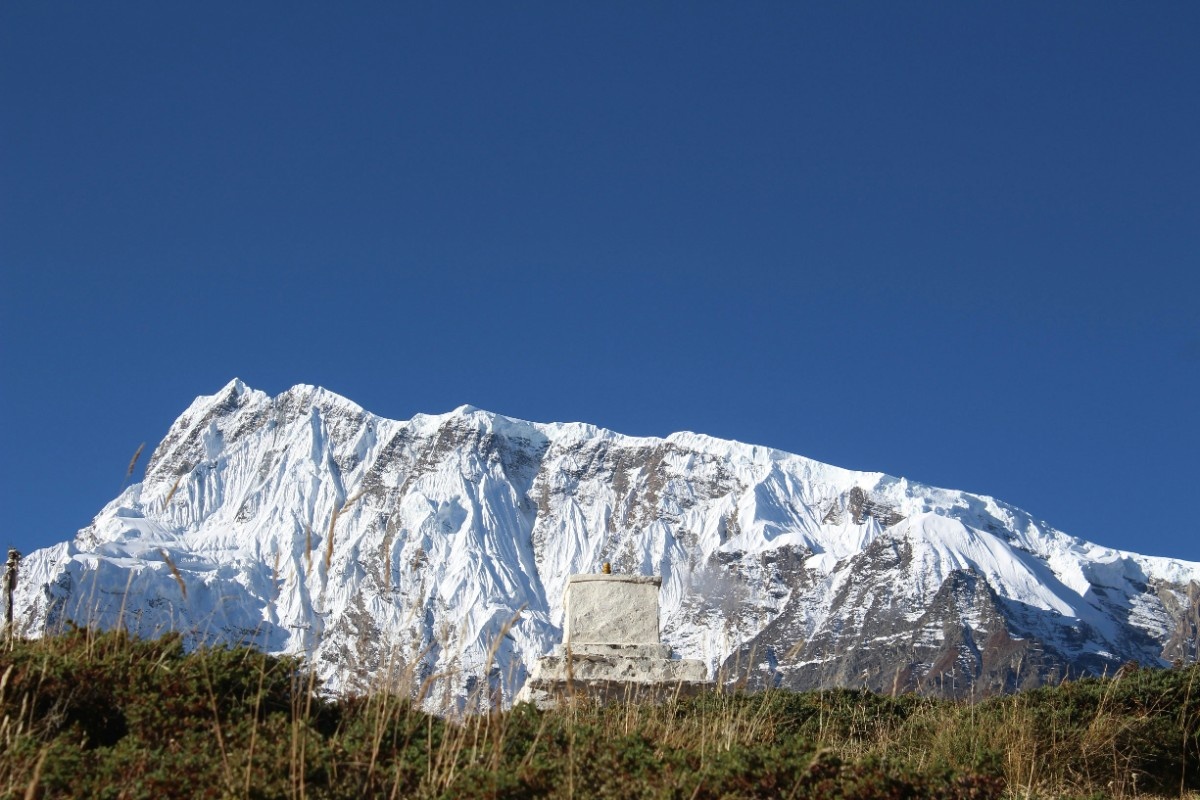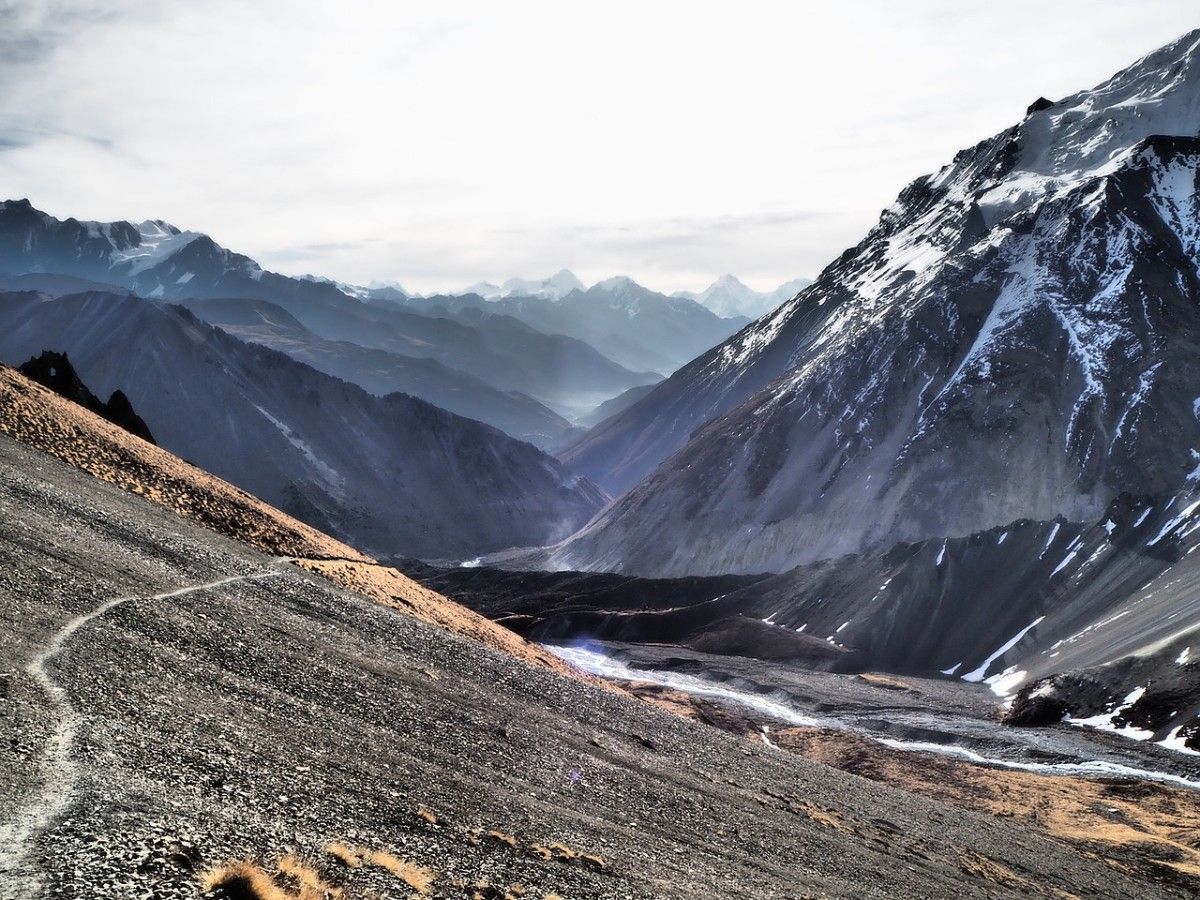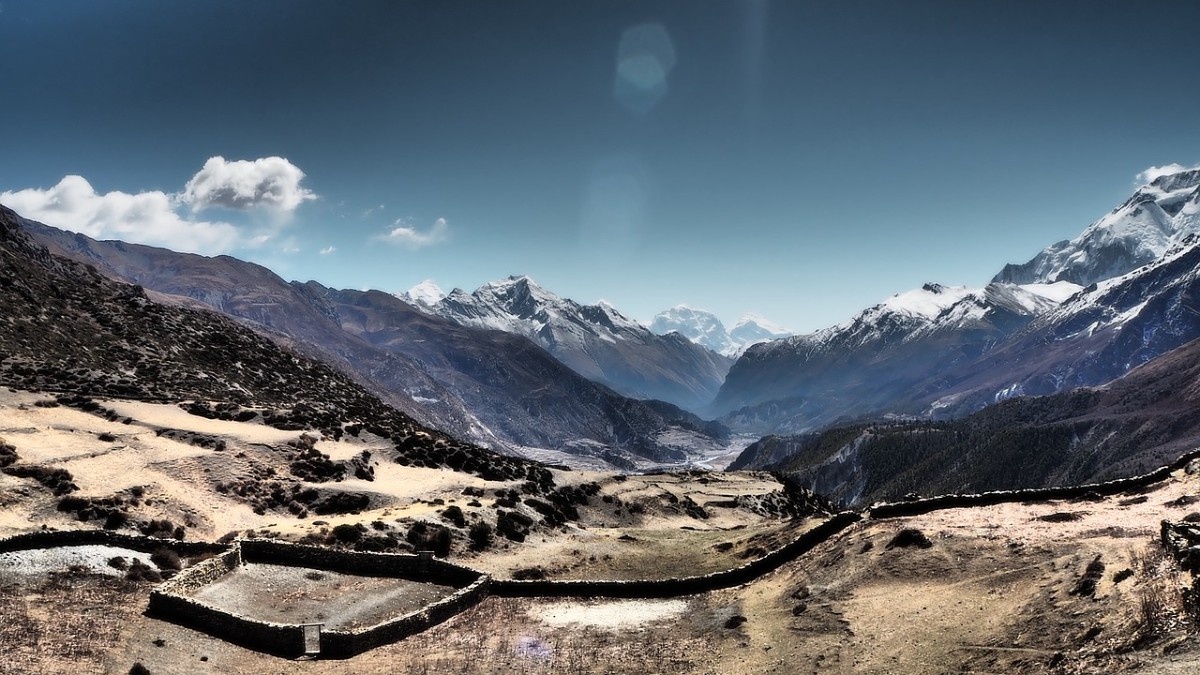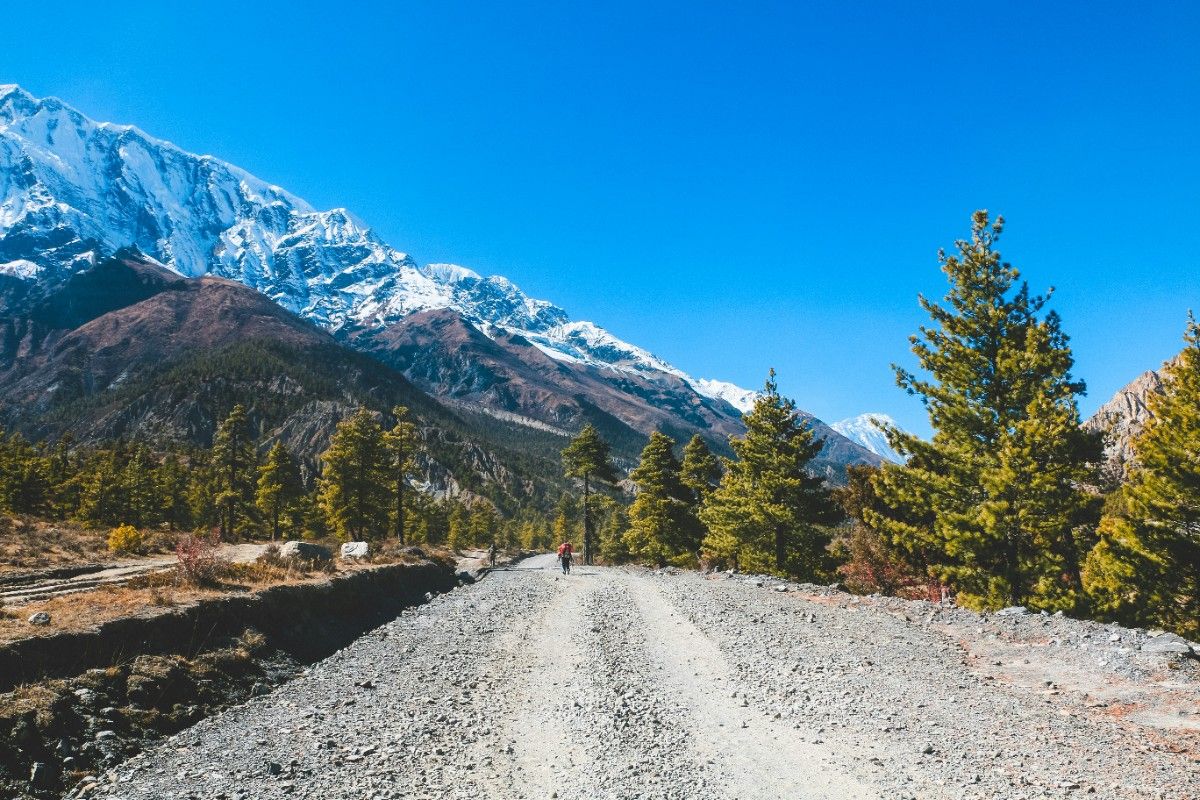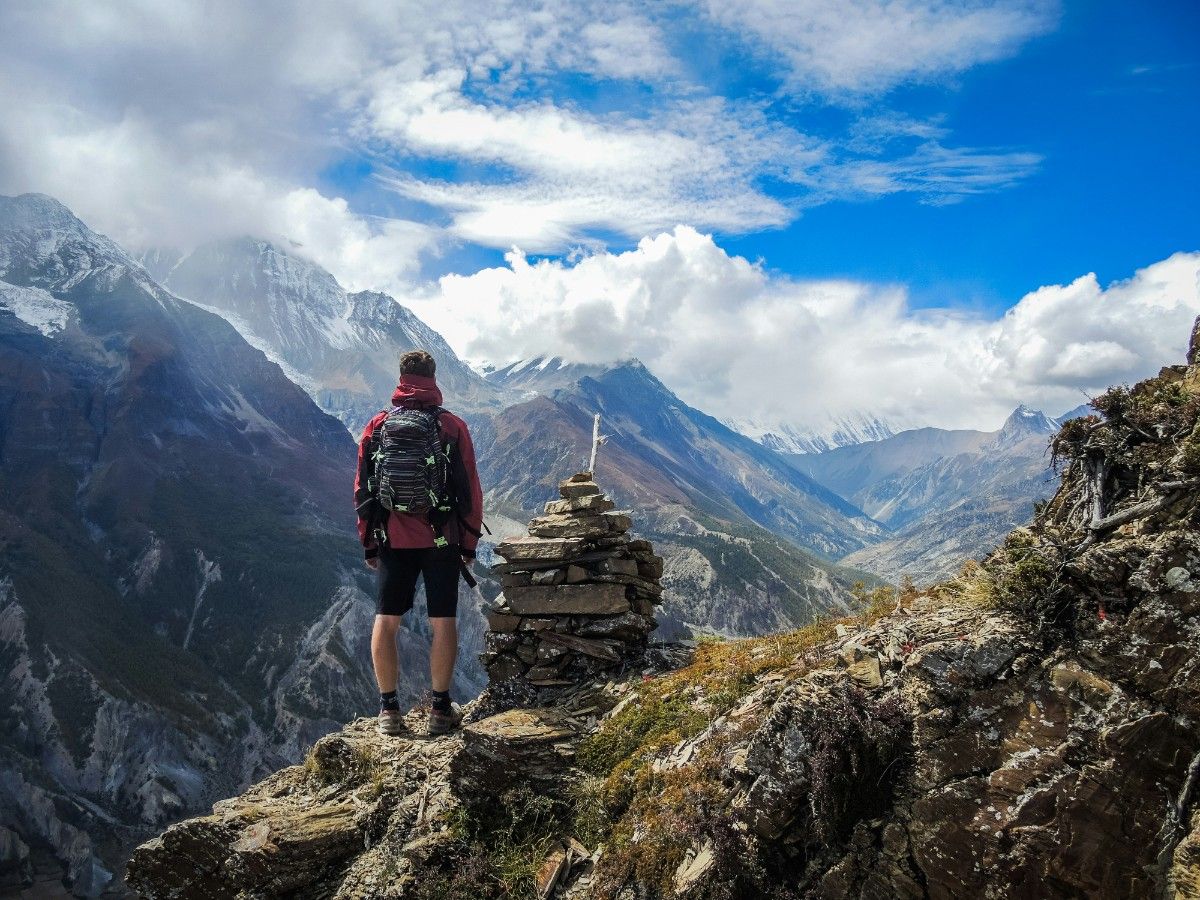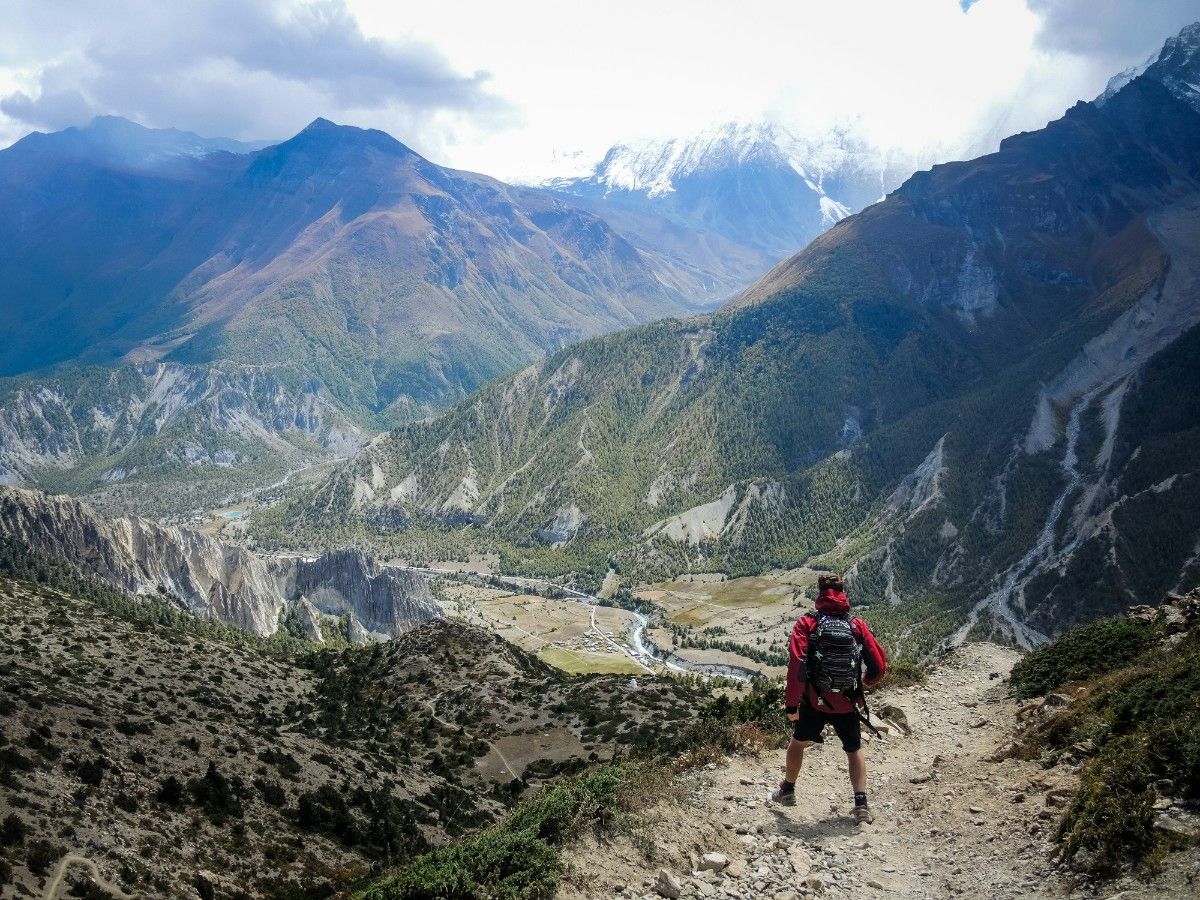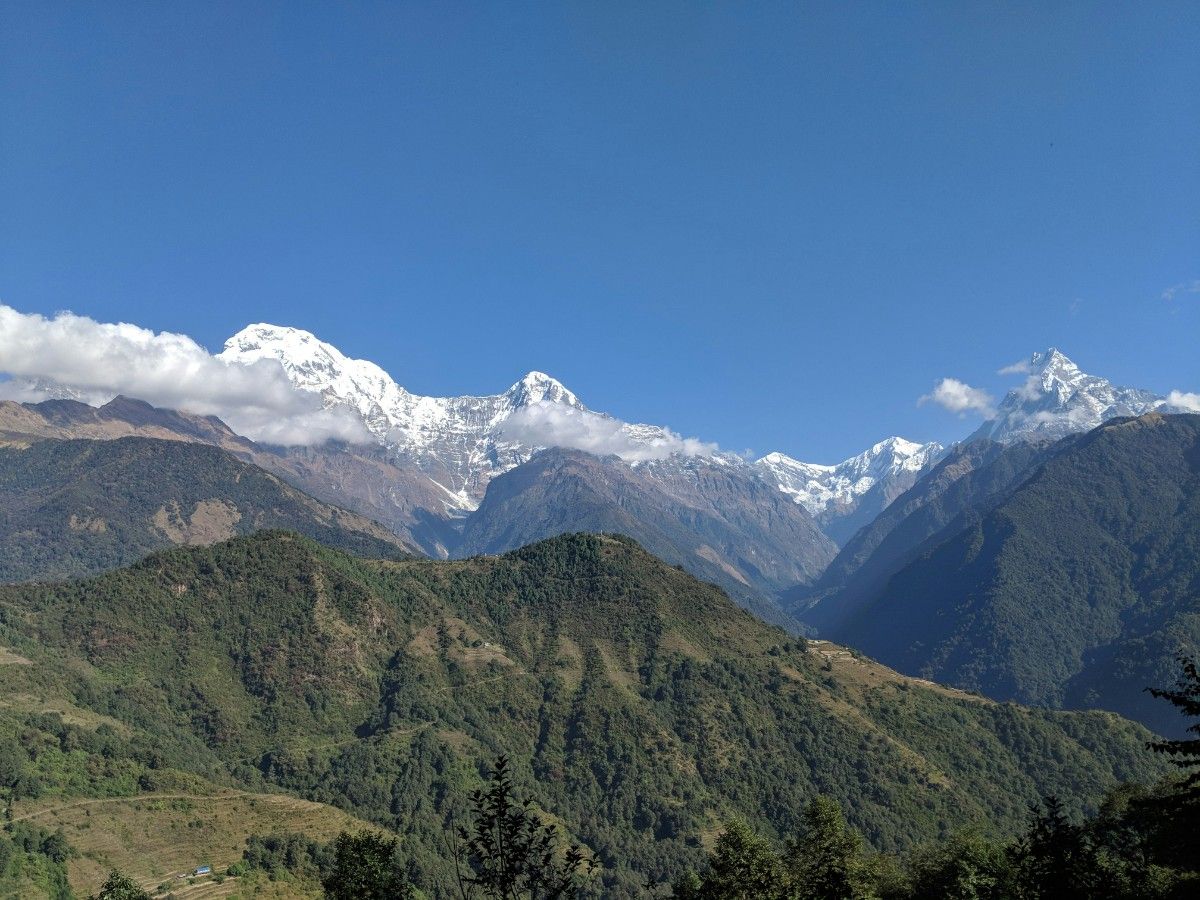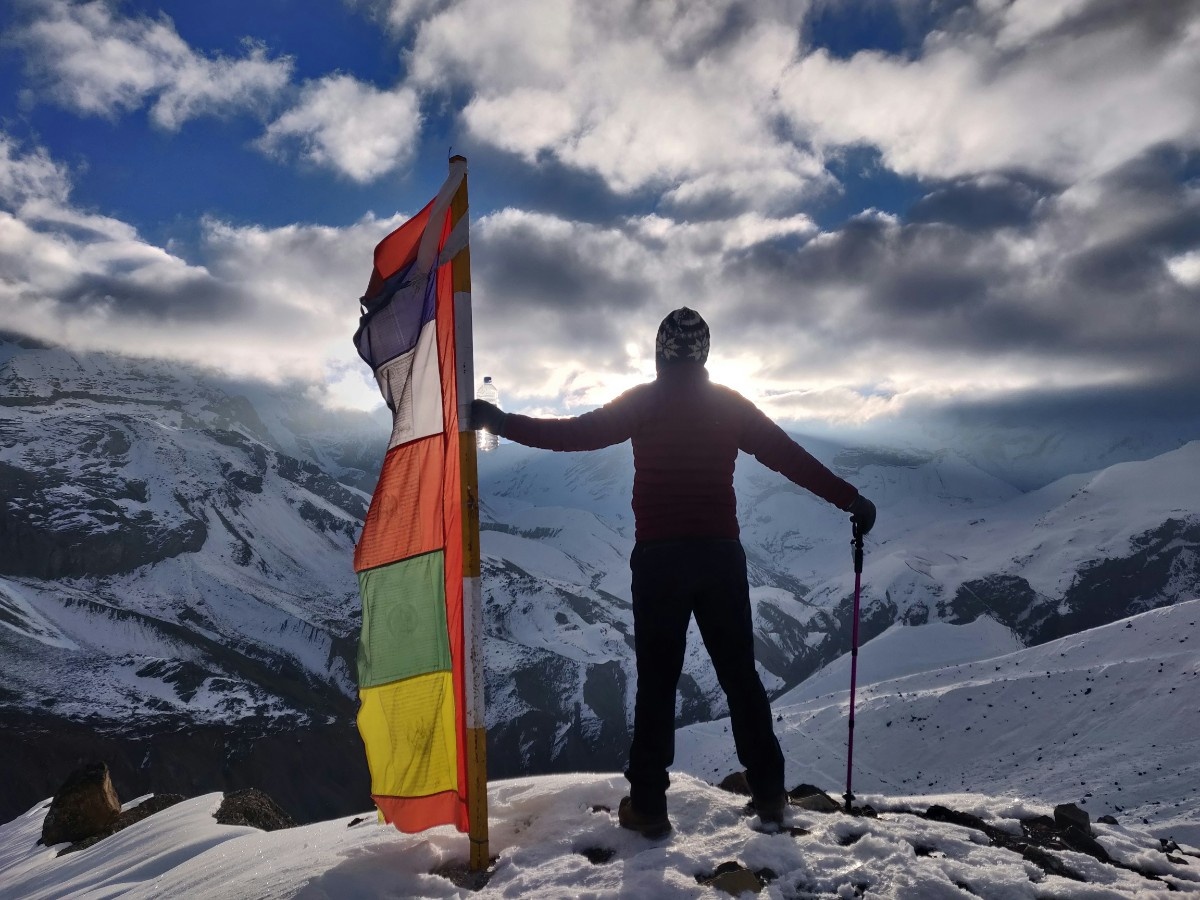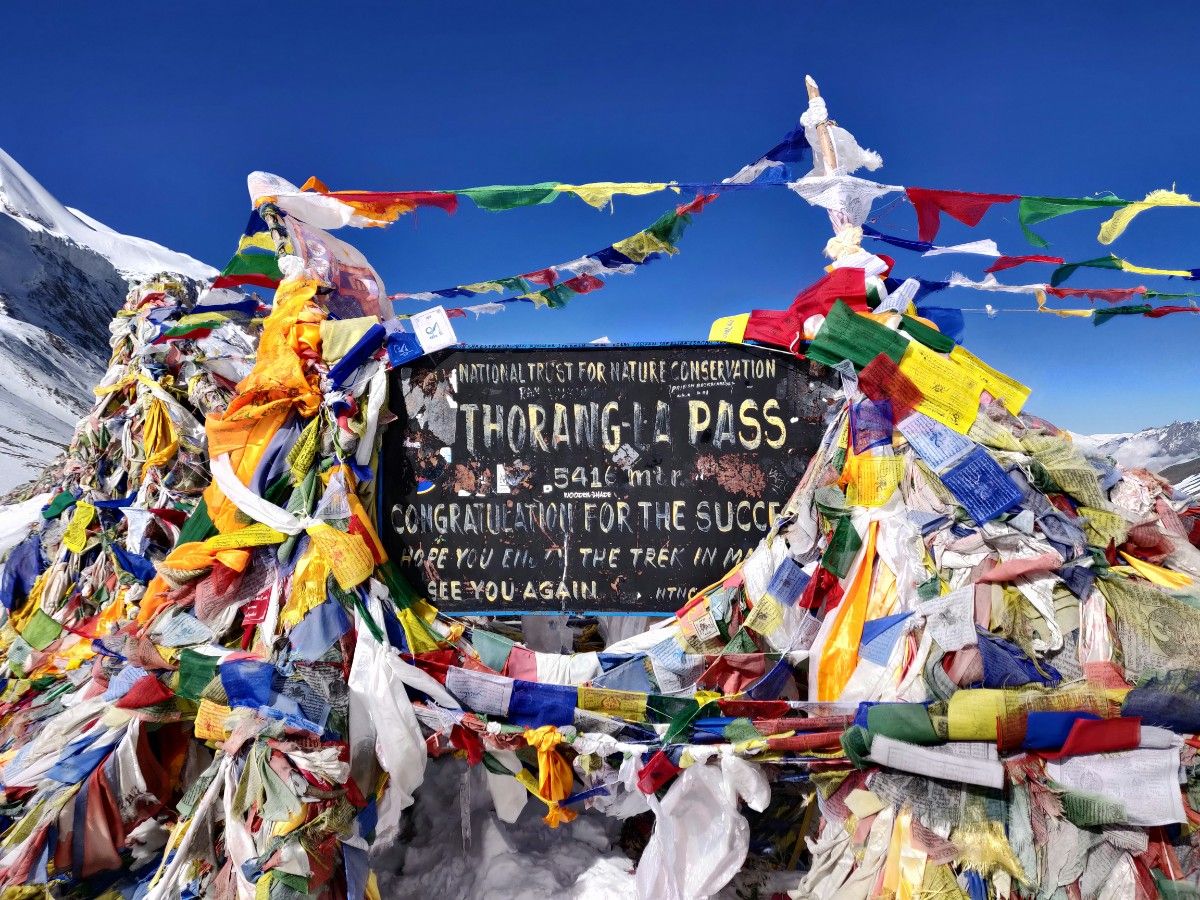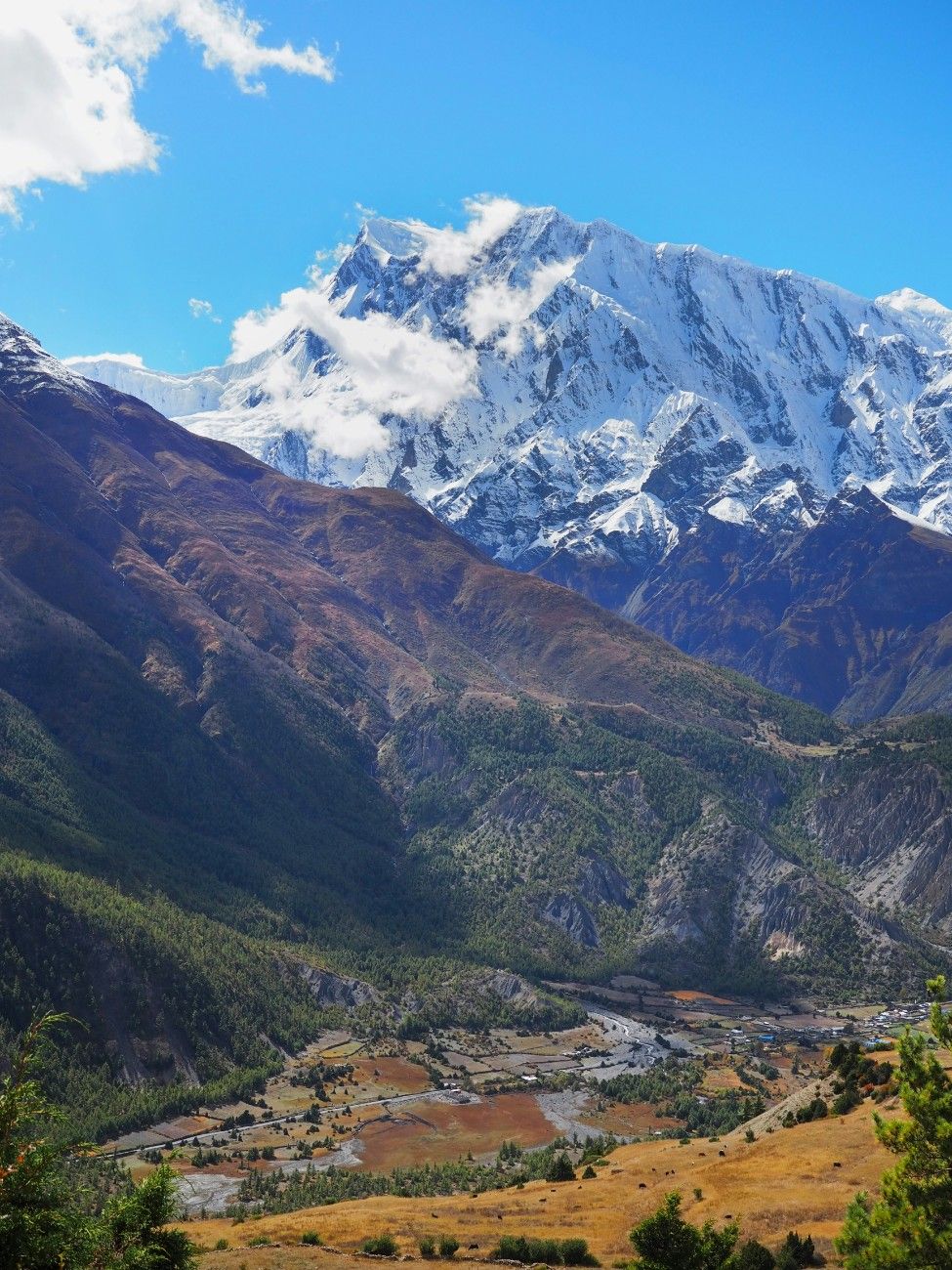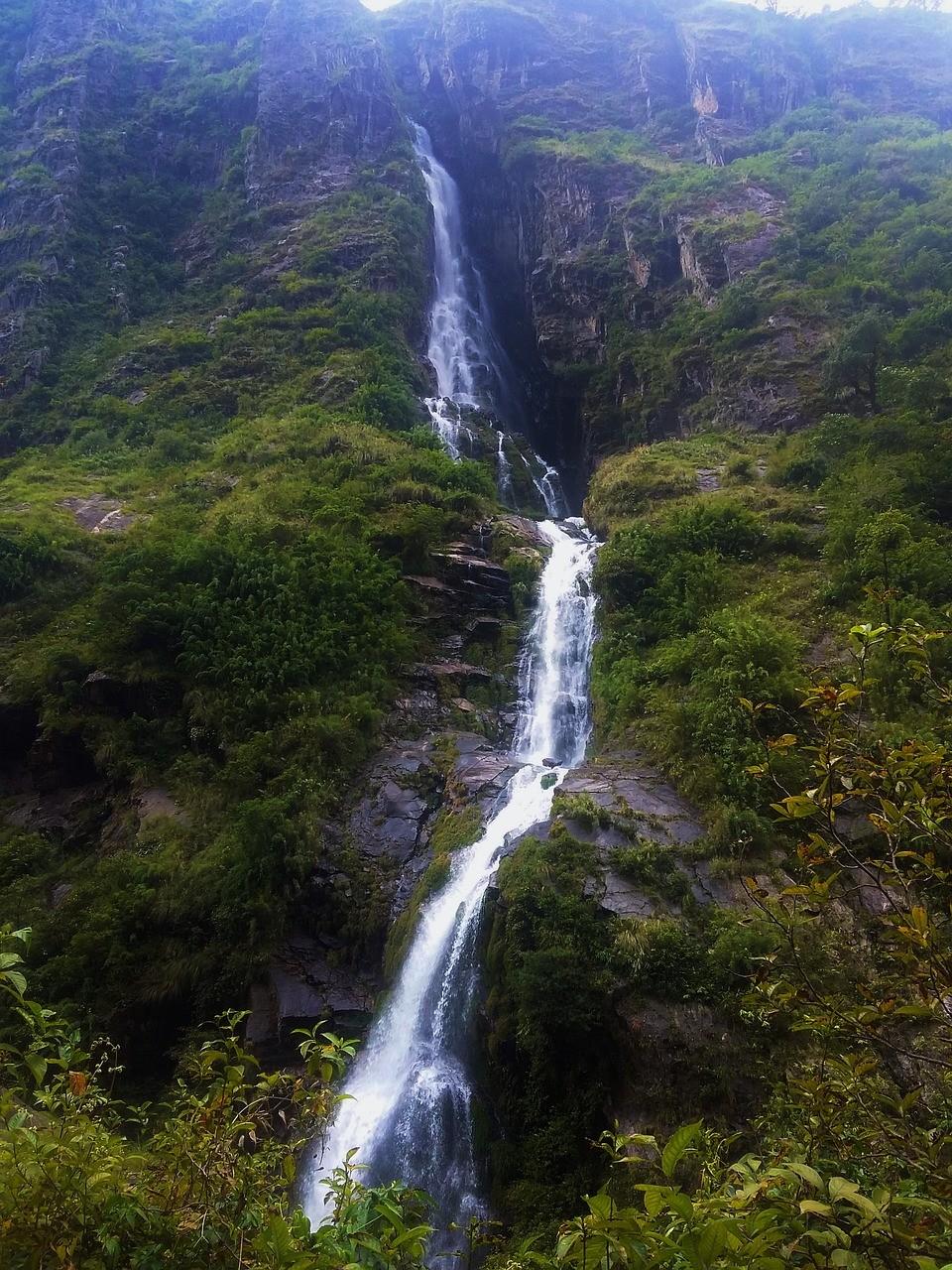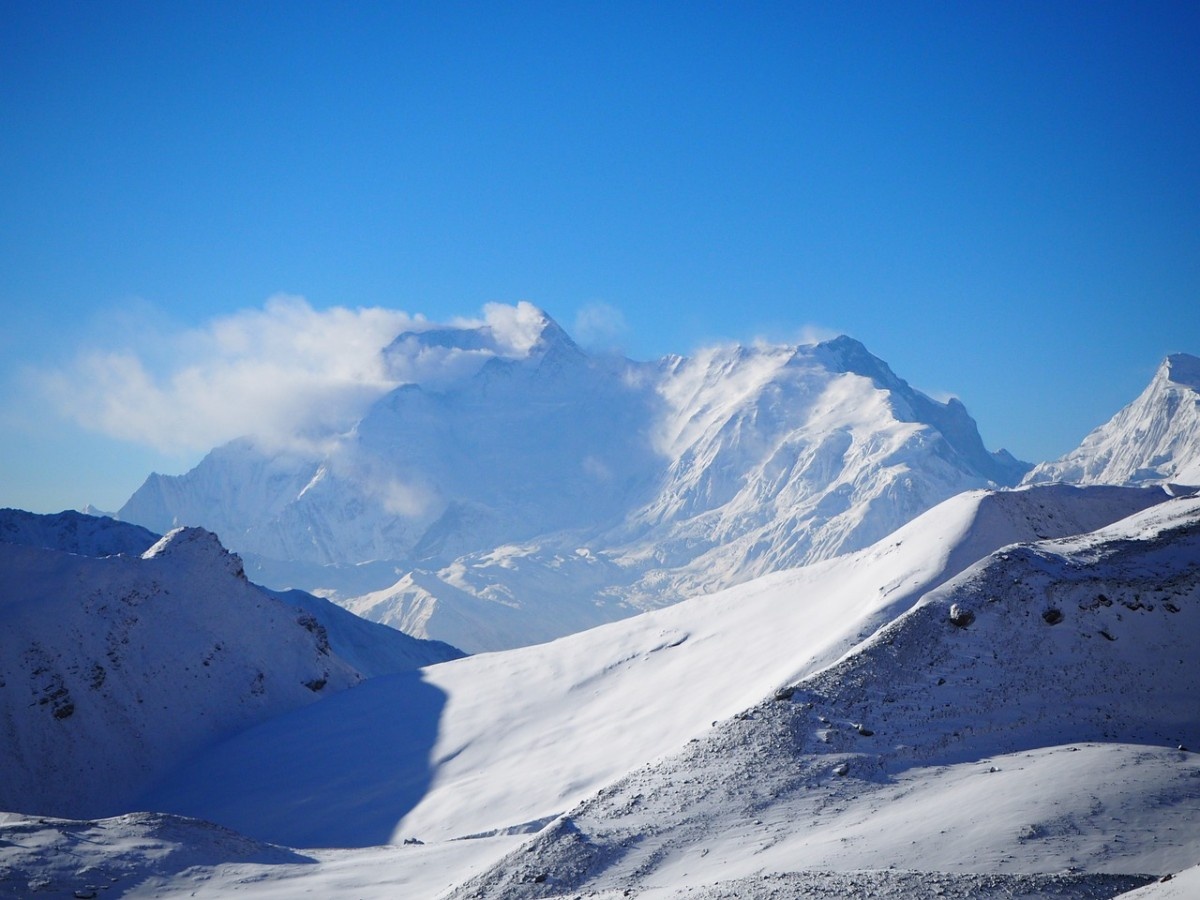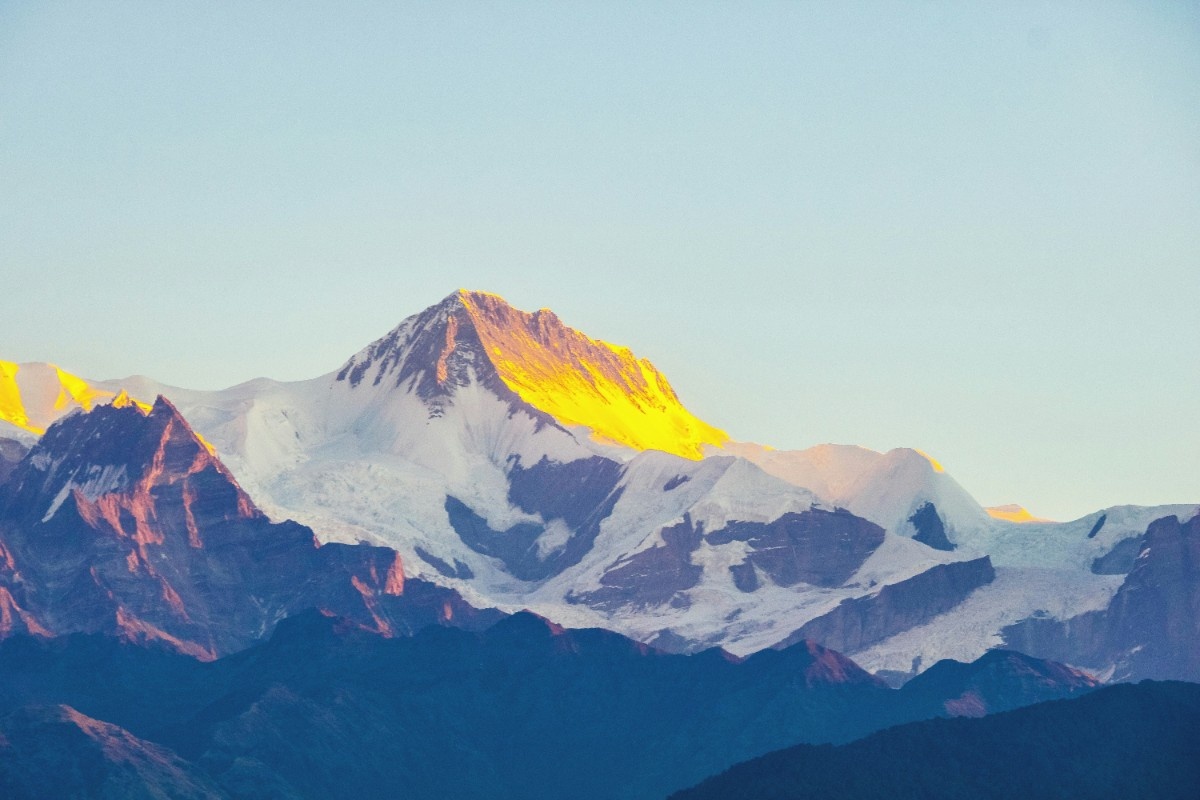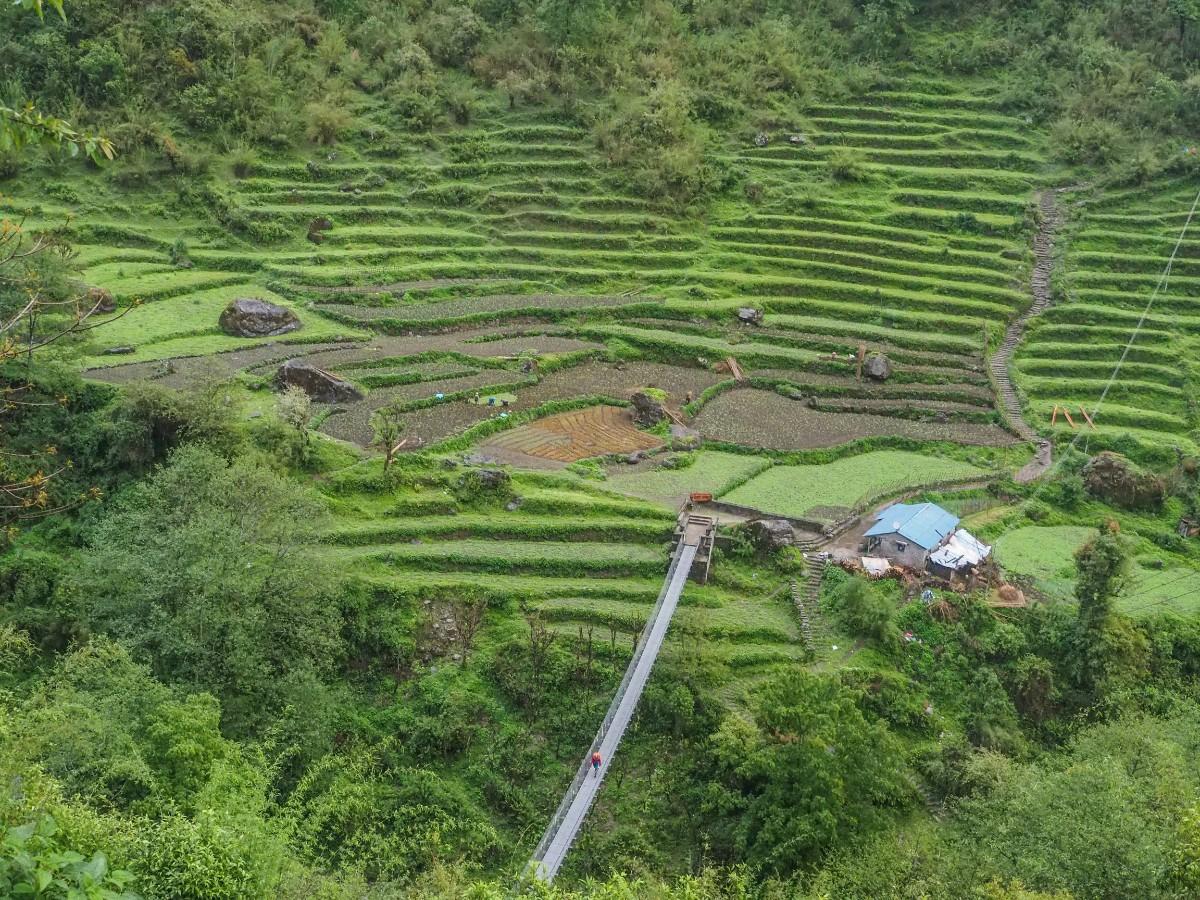Introduction to the Annapurna Circuit
Overview of the Annapurna Circuit Trek
The Annapurna Circuit is a world-renowned trekking route located in the breathtaking Himalayas of Nepal. This iconic trek offers adventurers an unparalleled opportunity to immerse themselves in the stunning natural beauty and rich cultural heritage of the Annapurna region. The Annapurna Circuit trek typically spans 160-230 kilometres, depending on the route and side trips taken, and circumnavigates the majestic Annapurna massif, home to the 10th highest mountain in the world, Annapurna I, standing tall at 8,091 metres (26,545 feet).
The Annapurna Circuit is not just a physical challenge, but also a cultural journey that takes trekkers through diverse landscapes, from lush subtropical forests to barren high-altitude plateaus. Along the way, trekkers have the opportunity to engage with friendly locals, experience traditional Hindu and Buddhist cultures, and stay in charming tea houses that provide a unique glimpse into the Nepalese way of life. The trek usually takes between 12 to 20 days to complete, allowing ample time for acclimatisation and exploration of the awe-inspiring surroundings.
Highlights of the Annapurna Circuit
The Annapurna Circuit is renowned for its diverse and spectacular landscapes that showcase the remarkable beauty of the Himalayas. As trekkers make their way along the trail, they will encounter a wide array of ecosystems, from the subtropical jungles of the Marshyangdi Valley to the arid, high-altitude desert of the Manang Valley. The trail winds through picturesque villages, ancient monasteries, and stunning mountain passes, each offering a unique and unforgettable experience.
One of the most anticipated highlights of the Annapurna Circuit trek is reaching the Thorong La Pass, the highest point on the route at an altitude of 5,416 metres (17,769 feet). Conquering this challenging pass is a momentous achievement and rewards trekkers with breathtaking panoramic views of the surrounding peaks and valleys. Other notable highlights include visiting the sacred Muktinath Temple, exploring the vibrant Manang village, and witnessing the stunning sunrises and sunsets over the Himalayas.
Planning Your Annapurna Circuit Trek
Best Time to Trek the Annapurna Circuit
Choosing the best time to embark on your Annapurna Circuit adventure is crucial for ensuring a safe and enjoyable experience. The ideal seasons for trekking the Annapurna Circuit are autumn (September to November) and spring (March to May). During these months, the weather conditions are generally stable, with clear skies, moderate temperatures, and minimal rainfall, providing the best opportunities to enjoy the stunning mountain vistas and comfortable trekking conditions.
Autumn is often considered the most popular time to trek the Annapurna Circuit, as the post-monsoon season offers excellent visibility and vibrant colours in the landscape. The days are typically warm and pleasant, while the nights can be chilly, especially at higher elevations. Spring is another fantastic time to trek, with the added bonus of witnessing the beautiful rhododendron blooms that paint the hillsides in a vibrant array of colours. However, it's essential to note that the spring season can experience occasional haze and cloud cover, which may slightly obscure the mountain views.
Physical Preparation and Acclimatisation
Trekking the Annapurna Circuit is a physically demanding endeavour that requires a good level of fitness and proper acclimatisation. The trek involves long days of walking at high altitudes, often on steep and uneven terrain, which can be challenging for even the most experienced trekkers. To ensure a successful and enjoyable experience, it's crucial to engage in regular exercise and build up your stamina and endurance in the months leading up to your trek.
Proper acclimatisation is another key factor in ensuring a safe and successful Annapurna Circuit trek. The route involves gradual ascents to higher altitudes, allowing your body to adapt to the thinner air and reduced oxygen levels. It's essential to take rest days and follow a slow and steady pace, especially when gaining elevation. Symptoms of altitude sickness, such as headaches, nausea, and fatigue, should be closely monitored and addressed promptly. Staying hydrated, eating well, and listening to your body's needs are all crucial aspects of proper acclimatisation.
Permits and Logistics
Before embarking on your Annapurna Circuit adventure, it's essential to obtain the necessary permits and arrange your logistics. Trekkers are required to obtain the Annapurna Conservation Area Project (ACAP) permit and the Trekkers' Information Management System (TIMS) card before starting the trek. These permits help regulate trekking activities, support conservation efforts, and ensure the safety and well-being of trekkers in the region.
Many trekkers choose to hire a reputable trekking agency or guide to handle the permit process and arrange transportation, accommodation, and meals along the route. This can greatly simplify the planning process and provide added safety and support during the trek. When selecting a trekking agency or guide, it's important to research their reputation, read reviews from previous clients, and ensure they have the necessary experience and qualifications to lead a safe and enjoyable trek.
In addition to permits and guidance, trekkers should also carefully plan their gear and equipment. A comprehensive packing list should include suitable trekking attire, a reliable backpack, sturdy hiking boots, a warm sleeping bag, and essential personal and medical supplies. By thoroughly planning your Annapurna Circuit trek, you can ensure a smooth and memorable experience in this incredible Himalayan paradise.
Navigating the Annapurna Circuit Trail
Understanding the Annapurna Circuit Map
A comprehensive understanding of the Annapurna Circuit map is essential for navigating this incredible trekking route. The map provides valuable information on the trail's distance, elevation, and key landmarks, such as villages, tea houses, and mountain passes. Familiarising yourself with the Annapurna Circuit trekking map before embarking on your journey will help you plan your daily progress, anticipate challenges, and make the most of your experience.
The Annapurna Circuit trek map typically includes detailed information on the various stages of the route, from the starting point in Besisahar to the final destination in Pokhara. The map also highlights alternative routes and side trips, such as the Tilicho Lake excursion or the Annapurna Base Camp detour, allowing trekkers to customise their itinerary based on their interests and abilities. It's essential to study the map carefully, noting the locations of the tea houses, water sources, and potential hazards along the way.
Trail Conditions and Signage
The Annapurna Circuit trail is well-maintained and clearly marked, making it relatively easy to navigate for experienced trekkers. The trail conditions vary throughout the route, ranging from well-trodden paths to rocky and uneven terrain. In some areas, particularly at higher elevations, the trail may be exposed to landslides or erosion, requiring extra caution and attention.
The Annapurna Circuit is marked with clear signage and trail markers, including painted arrows, cairns, and prayer flags. These markers help guide trekkers along the correct path and provide reassurance in areas where the trail may be less distinct. However, it's still essential to remain vigilant and attentive while navigating the trail, especially in case of inclement weather or unexpected changes in trail conditions.
Guided vs. Independent Trekking
When navigating the Annapurna Circuit, trekkers have the option to embark on a guided trek or an independent adventure. Guided treks offer the added safety and convenience of a knowledgeable local guide who is familiar with the route, trail conditions, and cultural nuances of the region. Guides can provide valuable insights, offer language assistance, and ensure that trekkers stay on course and avoid potential hazards.
Independent trekking, on the other hand, allows for greater flexibility and autonomy in terms of route planning and daily itinerary. Independent trekkers should be experienced, well-prepared, and comfortable with navigating using maps and trail markers. While the Annapurna Circuit is well-established and relatively easy to follow, independent trekkers should still exercise caution and be prepared for any unexpected challenges that may arise along the way.
Tea Houses and Accommodation Along the Annapurna Circuit
Overview of Tea Houses
One of the unique and charming aspects of trekking the Annapurna Circuit is the opportunity to stay in traditional tea houses along the way. Tea houses are small, family-run lodges that provide basic accommodation and meals for trekkers, offering a warm and welcoming respite after a long day on the trail. These establishments are scattered throughout the Annapurna Circuit, typically located in villages or at strategic points along the route.
Tea houses along the Annapurna Circuit range from simple, rustic structures to more modern and well-equipped lodges. They usually offer a combination of private rooms and dormitory-style accommodations, catering to the varying needs and budgets of trekkers. While the amenities may be basic, with shared bathrooms and limited hot water, the warm hospitality and cosy atmosphere more than make up for any lack of luxury.
Accommodation and Amenities
Tea houses along the Annapurna Circuit provide trekkers with a comfortable place to rest and recharge after a long day on the trail. Most tea houses offer a range of accommodation options, from private rooms with twin beds to dormitory-style rooms with bunk beds. Bedding, including blankets and pillows, is typically provided, although trekkers may prefer to bring their own sleeping bags for added comfort and hygiene.
In addition to accommodation, tea houses also offer a variety of amenities to make trekkers' stays more comfortable. Many tea houses have communal dining areas where guests can enjoy hot meals, interact with fellow trekkers, and warm up around a stove. Some tea houses also offer hot showers, charging facilities for electronic devices, and basic Wi-Fi, although these amenities may be limited or unavailable in more remote locations.
Food and Dining
Tea houses along the Annapurna Circuit serve as both lodging and dining establishments, providing trekkers with hearty meals to fuel their adventures. The menus typically feature a mix of Nepalese and Western dishes, catering to the diverse tastes of international trekkers. Popular options include dal bhat (a traditional Nepalese meal of rice, lentils, and vegetables), noodle soups, pasta dishes, and pizza.
As trekkers ascend to higher elevations, the menu options may become more limited due to the challenges of transporting fresh ingredients and the reduced availability of fuel for cooking. However, tea house owners and chefs strive to provide nourishing and satisfying meals to keep trekkers well-fed and energised throughout their journey.
It's important to note that the cost of meals and accommodation at tea houses along the Annapurna Circuit is relatively higher compared to other parts of Nepal, due to the remote location and the effort required to transport supplies. Trekkers should budget accordingly and be prepared to pay a bit more for the convenience and comfort of staying in tea houses along the route.
Highlights and Challenges of the Annapurna Circuit
Conquering the Thorong La Pass
One of the most iconic and challenging highlights of the Annapurna Circuit trek is conquering the Thorong La Pass, which stands at a breathtaking altitude of 5,416 metres (17,769 feet). This pass is the highest point on the Annapurna Circuit and marks a significant milestone for trekkers. The journey to the pass is a test of endurance and determination, as the trail winds through the barren, high-altitude landscape of the Manang Valley.
As trekkers approach the pass, the thin air and steep ascent can be physically demanding, but the sense of accomplishment upon reaching the top is unparalleled. The stunning panoramic views from the Thorong La Pass are a well-earned reward, with the snow-capped peaks of the Annapurna Himalayas stretching out in every direction. The pass also serves as a symbolic gateway between the arid, Tibetan-influenced region of Manang and the lush, subtropical Mustang Valley on the other side.
Immersing in the Local Culture
Another highlight of the Annapurna Circuit is the opportunity to immerse oneself in the rich cultural tapestry of the region. The trail passes through numerous traditional villages, each with its own unique character and way of life. Trekkers can interact with friendly locals, observe their daily rituals, and gain insight into the diverse spiritual and cultural practices that shape the communities along the route.
From the Hindu settlements of the lower elevations to the Buddhist monasteries and gompas of the higher regions, the Annapurna Circuit offers a fascinating glimpse into the religious and cultural diversity of Nepal. Trekkers can visit ancient temples, spin prayer wheels, and witness colourful prayer flags fluttering in the mountain breeze. Engaging with the local culture not only enriches the trekking experience but also fosters a deeper understanding and appreciation for the people who call this remarkable region home.
Overcoming Challenges
While the Annapurna Circuit trek offers incredible rewards, it also presents several challenges that trekkers must be prepared to face. The most significant challenge is the high altitude, which can cause symptoms of altitude sickness such as headaches, nausea, and fatigue. Proper acclimatisation and a slow, steady pace are essential for minimising the risk of altitude-related illnesses.
Another challenge is the physical demands of the trek itself. The Annapurna Circuit involves long days of walking on steep, uneven terrain, often in challenging weather conditions. Trekkers must be physically fit and mentally prepared to push through the exhaustion and discomfort that can come with extended periods of hiking at high altitudes.
The unpredictable nature of the mountain environment can also pose challenges. Weather conditions can change rapidly in the Himalayas, with sudden storms, heavy snowfall, or strong winds potentially altering trekking plans. Trekkers must be adaptable, well-equipped, and prepared to follow the guidance of their experienced guides or local authorities to ensure a safe and successful journey.
Packing Essentials for the Annapurna Circuit Trek
Trekking Gear and Equipment
To ensure a comfortable and safe trekking experience on the Annapurna Circuit, it's crucial to pack the right gear and equipment. A sturdy, well-fitted pair of hiking boots is perhaps the most important item on your packing list. The Annapurna Circuit involves long days of walking on varied terrain, so invest in a pair of boots that provide good ankle support, traction, and comfort.
Other essential trekking gear includes a reliable backpack, trekking poles, a warm sleeping bag, and a sleeping mat. While tea houses along the route provide blankets and pillows, having your own sleeping gear ensures a more hygienic and comfortable experience. A headtorch or handheld torch is also necessary for navigating the trails and tea houses during early mornings or evenings.
Clothing and Layering
The key to staying comfortable on the Annapurna Circuit is layering. The weather can vary greatly between the lower and higher elevations, with temperatures ranging from warm and humid to cold and windy. Pack a combination of lightweight, breathable base layers, insulating mid-layers, and waterproof outer layers to adapt to the changing conditions.
Essential clothing items include moisture-wicking t-shirts, trekking pants, thermal underwear, fleece jackets, and a down or synthetic insulated jacket. Don't forget to pack a warm hat, gloves, and a neck gaiter or buff to protect against the cold and wind at higher altitudes. Quick-drying, lightweight socks and underwear are also important for maintaining hygiene and comfort on the trail.
Personal and Medical Supplies
In addition to trekking gear and clothing, it's important to pack a range of personal and medical supplies to ensure your well-being on the Annapurna Circuit. Sun protection is essential, as the high altitude intensifies the sun's rays. Pack a high-SPF sunscreen, lip balm, sunglasses, and a sun hat to shield your skin and eyes from harmful UV radiation.
A well-stocked first-aid kit is a must-have for any trekking adventure. Include items such as bandages, blister treatments, pain relievers, and any personal medications you may require. It's also a good idea to pack water purification tablets or a filtration system to ensure access to safe drinking water throughout the trek.
Other personal items to consider packing include a quick-drying towel, biodegradable wet wipes, a small toiletry kit, and a reliable water bottle or hydration system. Don't forget to bring some cash for purchasing meals, snacks, and souvenirs along the way, as ATMs and credit card facilities are limited in the trekking regions.
By carefully selecting and packing the right gear, clothing, and supplies, trekkers can ensure a more comfortable, safe, and enjoyable experience on the Annapurna Circuit trek.
Respecting the Environment and Local Culture
Leave No Trace Principles
As trekkers on the Annapurna Circuit, it is our responsibility to minimise our impact on the delicate ecosystem and preserve the natural beauty of the region for future generations. The Leave No Trace principles provide a framework for responsible trekking and camping practices that help maintain the environmental integrity of the Annapurna Himalayas.
One of the most important aspects of Leave No Trace is proper waste management. Trekkers should always pack out their trash and dispose of it responsibly in designated waste facilities. This includes not only obvious litter but also items like food scraps, toilet paper, and hygiene products. When using the toilet in the wilderness, it's essential to bury human waste at least 6 inches deep and 200 feet away from water sources, trails, and campsites.
Another key principle is minimising campfire impacts. In the Annapurna Circuit, trekkers typically stay in tea houses, so campfires are not necessary. However, if you do find yourself camping, use established fire rings, keep fires small, and burn only dead and downed wood. Always fully extinguish fires before leaving the campsite.
Respecting wildlife is also crucial. Observe animals from a distance, do not feed them, and avoid disturbing their natural habitats. Store food and scented items securely to prevent attracting animals to campsites or tea houses. By following these guidelines, trekkers can help maintain the ecological balance and minimise their impact on the Annapurna Circuit's fragile environment.
Cultural Sensitivity and Respect
In addition to respecting the environment, trekkers on the Annapurna Circuit should also be mindful of the local culture and customs. The trail passes through many traditional villages and communities, each with their own unique way of life. As visitors, it is our responsibility to show respect and sensitivity towards the local people and their practices.
One important aspect of cultural respect is dressing modestly. While trekking attire is acceptable on the trail, it's essential to cover up when entering villages, monasteries, or other sacred sites. Avoid wearing revealing clothing or items with offensive slogans or images. When in doubt, follow the lead of your guide or observe how the locals dress.
Another way to show respect is by asking permission before taking photos of people, their homes, or religious sites. Many locals are happy to have their pictures taken, but it's always polite to ask first. If someone declines, respect their wishes and refrain from photographing them.
Learning a few basic phrases in Nepali, such as "Namaste" (hello) and "Dhanyabad" (thank you), can go a long way in showing respect and building positive relationships with the local people. When entering homes or monasteries, remove your shoes and follow any specific customs or guidelines provided by your guide or local hosts.
Supporting Local Communities
Trekking the Annapurna Circuit offers an excellent opportunity to support local communities and contribute to the sustainable development of the region. One way to do this is by choosing to stay in locally-owned tea houses and hiring local guides and porters. These businesses often rely on tourism for their livelihoods, and by supporting them, trekkers can help ensure that the benefits of tourism are distributed more equitably.
Another way to support local communities is by purchasing locally-made handicrafts, souvenirs, and products. Many villages along the Annapurna Circuit have small shops or markets where you can find unique, handmade items that directly support local artisans and their families. However, be mindful of your purchases and avoid buying products made from endangered species or those that contribute to environmental degradation.
Trekkers can also support local conservation and development initiatives by contributing to organisations that work to protect the environment and improve the lives of local communities. Some reputable organisations include the Annapurna Conservation Area Project (ACAP) and the Himalayan Trust. By supporting these initiatives, trekkers can help ensure that the Annapurna Circuit remains a sustainable and thriving destination for generations to come.
Conclusion and Final Thoughts
An Unforgettable Himalayan Adventure
Trekking the Annapurna Circuit is an experience that offers a perfect blend of natural beauty, cultural immersion, and personal challenge. From the lush forests and terraced fields of the lower elevations to the barren, high-altitude landscapes of the Thorong La Pass, the Annapurna Circuit showcases the incredible diversity and grandeur of the Nepali Himalayas.
The journey is not just about the stunning scenery, but also the people you meet along the way. The warm hospitality of the local communities, the camaraderie among fellow trekkers, and the knowledge and guidance of experienced guides and porters all contribute to an unforgettable Himalayan adventure.
Embracing Challenges and Personal Growth
Trekking the Annapurna Circuit is not without its challenges. The high altitude, long days of walking, and unpredictable mountain weather can test even the most experienced trekkers. However, it is through these challenges that personal growth and transformation occur.
Conquering the Thorong La Pass, the highest point on the Annapurna Circuit, is a moment of pure triumph and accomplishment. The sense of pride and satisfaction that comes from pushing beyond your perceived limits and embracing the journey is a feeling that will stay with you long after you return home.
Responsible Travel and Lasting Impacts
As trekkers on the Annapurna Circuit, we have a responsibility to minimise our impact on the environment and respect the local culture. By adhering to the principles of Leave No Trace, supporting local communities, and being mindful of our actions, we can help preserve this incredible region for future generations.
The memories, friendships, and personal growth gained from trekking the Annapurna Circuit will last a lifetime. The experience serves as a reminder of the beauty and resilience of the natural world, and the importance of stepping out of our comfort zones and embracing new challenges.
In conclusion, trekking the Annapurna Circuit is an adventure that offers a perfect balance of natural beauty, cultural immersion, and personal growth. By approaching the trek with an open mind, a sense of responsibility, and a willingness to embrace the journey, trekkers can create lasting memories and positive impacts that extend far beyond the trail itself. The Annapurna Circuit is more than just a trek; it is a life-changing experience that will stay with you forever.
Related Articles

Let us know you agree to cookies
We use marketing, analytical and functional cookies as well as similar technologies to give you the best experience. Third parties, including social media platforms, often place tracking cookies on our site to show you personalised adverts outside of our website.
We store your cookie preferences for two years and you can edit your preferences via ‘manage cookies’ or through the cookie policy at the bottom of every page. For more information, please see our cookie policy.
